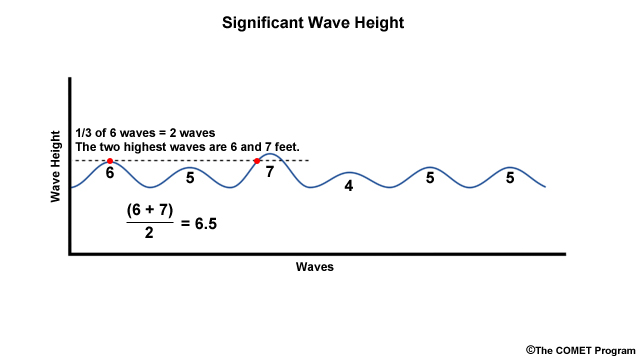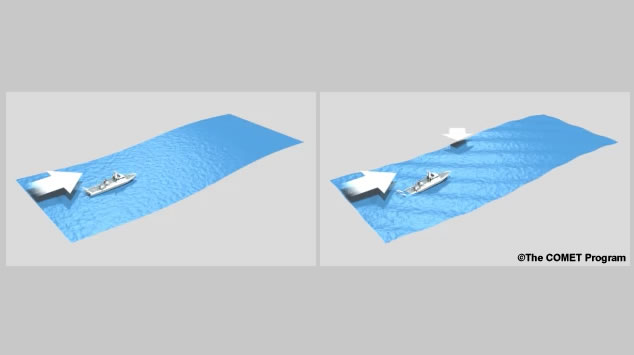Taking Wave Observations
From your observation point on the Kearsarge, the seas look quite muddled. AG2 Ferguson gives you some tips for differentiating between swell waves and wind waves.
AG2 Ferguson: "With seas, you have two different types of waves: you have wind waves, which are derived from the direction of the wind, and you have swell waves, which are derived from outside of your local area. In determining which direction a swell wave is coming from, you can utilize the gyro repeater. They're usually located on the bridge or bridge wings. On the gyro repeater, you have an outer ring which gives you the relative direction, and an inner ring which gives you the true direction. By viewing the seas and utilizing the inner ring of the gyro repeater, you can determine in which direction the seas are coming from."
Once you have differentiated between the swell waves and wind waves, you need to determine the height and period of each. You'll also report the swell wave direction.
AG2 Ferguson: "The best way to judge height and period is to imagine yourself standing out in those waves to decide how high you think they would come up on your body. A good way to judge is to use a pencil or your finger and you hold it out at armís length and count in seconds from crest to crest and trough to trough. So, once you see a crest coming across you start counting, 1, 2... and then another crest comes across, so that period is 2 seconds, and you can also do the same with swell waves."
If swell waves are present, they are often responsible for the rocking motion of the ship. Noting how the ship rocks can help you in determining your swell wave direction. Shipboard gyrometers can also help you to determine the direction of swell waves.
Taking wave height observations is not easy because of your level above the waves and because of the rolling and pitching of the ship. There is a tendency to underestimate low waves and overestimate the heights of high waves. If another ship is in company, you can observe the wave heights relative to that ship's side and compare it to a vertical distance (wave height ľ of the 28-foot bridge height would be 7 feet, for example).
To determine the significant wave height, observe the waves for a period of time (1 minute or longer) to develop a sense of how the heights vary. For the one-third of the waves that are highest, average the height values. The result is the significant wave height.




